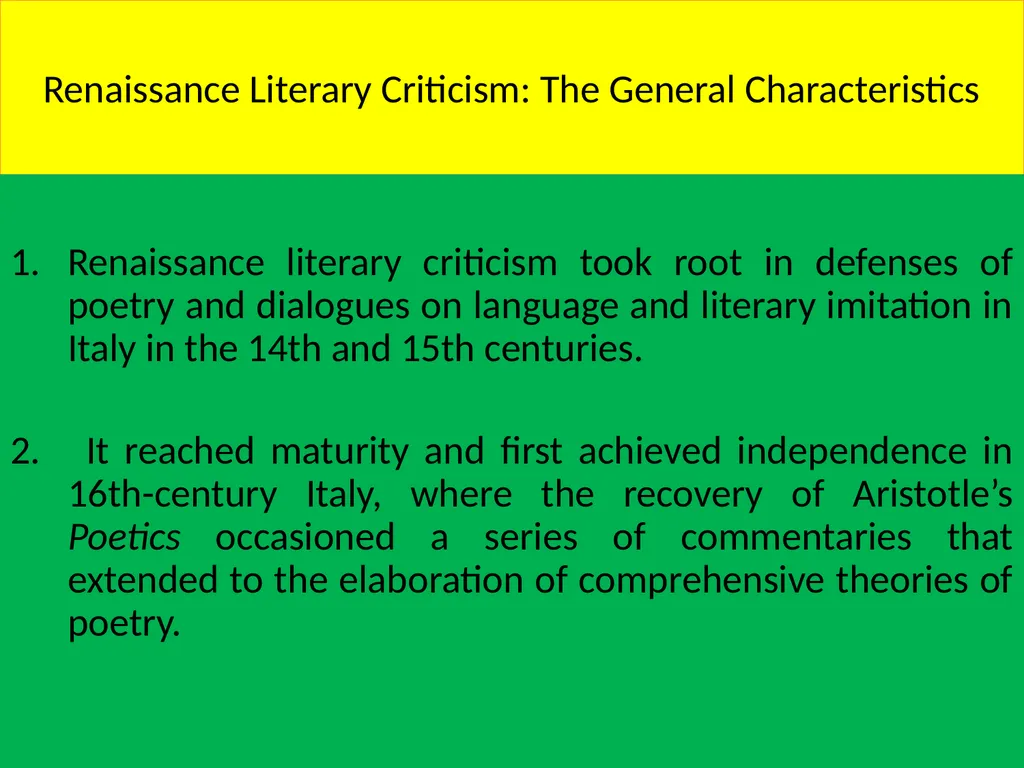Renaissance Literary Criticism: The General
Author : calandra-battersby | Published Date : 2025-05-12
Description: Renaissance Literary Criticism The General Characteristics Renaissance literary criticism took root in defenses of poetry and dialogues on language and literary imitation in Italy in the 14th and 15th centuries 2 It reached maturity and
Presentation Embed Code
Download Presentation
Download
Presentation The PPT/PDF document
"Renaissance Literary Criticism: The General" is the property of its rightful owner.
Permission is granted to download and print the materials on this website for personal, non-commercial use only,
and to display it on your personal computer provided you do not modify the materials and that you retain all
copyright notices contained in the materials. By downloading content from our website, you accept the terms of
this agreement.
Transcript:Renaissance Literary Criticism: The General:
Renaissance Literary Criticism: The General Characteristics Renaissance literary criticism took root in defenses of poetry and dialogues on language and literary imitation in Italy in the 14th and 15th centuries. 2. It reached maturity and first achieved independence in 16th-century Italy, where the recovery of Aristotle’s Poetics occasioned a series of commentaries that extended to the elaboration of comprehensive theories of poetry. Renaissance Literary Criticism: The General Characteristics 3. Fundamentally, it is indebted to Horace, Aristotle, and Plato, roughly in this order. 4. Critics extended classical poetics to meet the demands of contemporary Christian writers and readers. Their first priority was the defense of poetry against the incursions of its ancient and modern opponents and the defense of the vernacular as a poetic medium. Renaissance Literary Criticism: The General Characteristics 5. Defending poetry entailed defining it and establishing its formal criteria, both of which hinged on imitation. Following Aristotle, they tended to define poetry as an imitation, the status, source, and purpose of which they debated with recourse to other classical philosophers, critics, and rhetoricians. 6. It generally reflected the intellectual culture of the age by confronting at every turn the complex dynamics of imitation, both practically and theoretically. THE END See you next time!












![Renaissance Italy http://www.kmkz.com/jonesj/gallery/renaissance italy[1].jpg](https://thumbs.docslides.com/717618/renaissance-italy-http-www-kmkz-com-jonesj-gallery-renaissance-italy-1-jpg.jpg)

